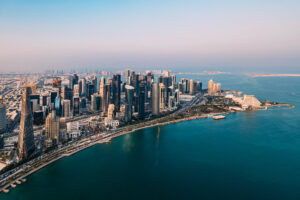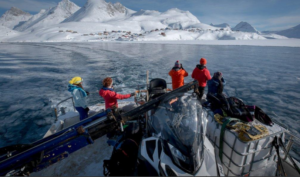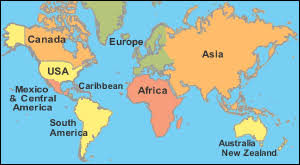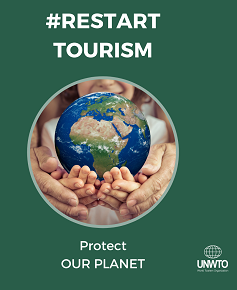Tibetan glaciers shrinking rapidly
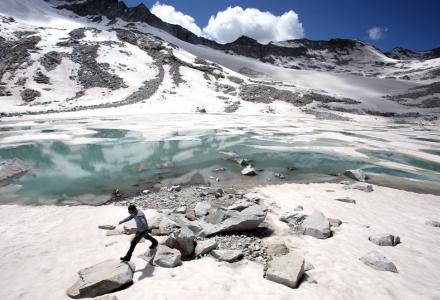
The majority of glaciers on the Tibetan plateau and in the surrounding region are retreating rapidly, according to a study based on 30 years of satellite and field measurements.
The research by Yao Tandong, a glaciologist at the Chinese Academy of Sciences’ Institute of Tibetan Research in Beijing, and his colleagues is published today in Nature Climate Change1. It “is the most comprehensive survey to date in the region”, says Tobias Bolch, a glaciologist in the University of Zurich, Switzerland.In the Himalayan mountains, glaciers are retreating more and more rapidly.
The Tibetan plateau and the bordering mountain ranges, including the Himalayas, the Karakoram, the Pamir and the Qilian make up a vast region known as the Third Pole, home to 100,000 square kilometres of glaciers that supply water to about 1.4 billion people in Asia.
The status of the glaciers has been a point of contention. Earlier this year, an analysis of 7 years’ worth of measurements taken by the Gravity Recovery and Climate Experiment (GRACE) satellite mission suggested2 that high-altitude Asian glaciers on the whole are losing ice only one-tenth as fast as previously estimated, and that glaciers on the Tibetan plateau are actually growing.
Yao and his colleagues analysed satellite measurements of the lengths and surface areas of about 7,100 glaciers. They also studied changes in the mass balance — the difference between accumulation and loss of ice — of 15 glaciers that they have painstakingly measured for decades.
“The majority of the glaciers have been shrinking rapidly across the studied area in the past 30 years,” says Yao. And the rate of retreat has been accelerating.But embedded in this general trend, says Yao, is a large variation in different parts of the Third Pole. For instance, glaciers in the Himalayas are retreating faster on average than those in the Karakoram and the Pamir.
To unravel the mechanisms underlying this variation, the researchers turned to climate records of the entire region. They found that changes in the glaciers, especially in their mass balance, depend in large part on whether the ice is under the influence of the Indian monsoon or the westerlies, the prevailing winds from Europe.
“Temperature rise is important,” says Yao. “But its effects on glaciers also depend on climate regimes.” In places dominated by the westerlies, such as the Karakoram and the Pamir plateau, glaciers gain their mass mostly from winter snow, and so are less affected by warming because temperatures in winter are still below zero. In the eastern and central Himalayas, however, it snows mainly during monsoon season, and a slight increase in summer temperatures can affect glaciers drastically.
In the past few decades, the Indian monsoon has been getting weaker. By contrast, the westerlies are getting stronger. “This explains why most glaciers that are either stable or advancing are in the Karakoram or the Pamir plateau,” says Yao.
The study raises serious issues with assessments based on GRACE measurements. Some climate scientists say that the measurements were taken over too short a time to capture the impact of climate change. Others question whether the satellite is suited to studying ice changes in the Third Pole.
The Tibetan plateau contains closed catchments where glacier melts can be stored in lakes, the soil and underground. A survey by Yao and his colleagues found that the area of glacial lakes on the plateau has increased by about 26% since the 1970s. “As the GRACE satellites can only feel the gravitational pull and can’t tell the difference between ice and liquid water, they may have mistaken expanding glacial lakes for increases in glacier mass,” says Yao.
John Wahr, a remote-sensing expert at the University of Colorado Boulder and lead author of the GRACE study, concedes that the criticism is valid. “This is an important weakness of GRACE for any non-polar glacier study,” he says.
“The study highlights the complexity of glacier responses in the region and the importance of ground truth for making accurate assessments,” says Lonnie Thompson, a glaciologist at Ohio State University in Columbus, and a co-author of the latest paper. “Mass-balance studies are extremely labour intensive and can often be dangerous, but there is never a substitute for boots on the ground.”- nature.com




